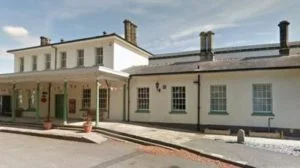Darlington – Stockton Railway Heritage Quarter

The Stockton and Darlington Railway was opened on 27 September 1825 with the prime purpose of transporting coal from the South West Durham collieries around Shildon, West Auckland and Witton Park, to the River Tees at Stockton, for shipment to the south of England.
The Stockton & Darlington was by no means the first railway, but its opening in 1825 marked a very significant step in the development of railways by bringing together two features for the first time:
- the concept of a public railway, available to all, for transport of passengers and goods
- the use of steam locomotives
The ceremonial opening on 27 September 1825 was the first occasion on which a steam locomotive was used to haul passengers on a public railway. The locomotive concerned, Stephenson’s ‘Locomotion’ still exists and is displayed at Head of Steam, which is situated on the original 1825 S & DR route.
This project will see the Darlington Railway Heritage Quarter (DRHQ) developed into a new internationally significant major visitor attraction and museum by 2024 so that it can be a central part of the bi-centenary celebrations of the Stockton and Darlington Railway in 2025. As well as carrying out essential improvements to a number of historic buildings on the site, there will be a new immersive ride experience, café and shop, themed play area and a new Live Engineering building, along with extended car parking spaces.
The DRHQ will be a unique and authentic visitor attraction that reveals the story of Darlington and of the communities that saw an opportunity and seized it, connecting and transforming the world in the process. It will be a place where local heritage is being activated in ways that will lead to sustainable regional regeneration, investment and the transfer of new knowledge and skills to local communities.
Historic England designated the 26-mile route of the Stockton to Darlington Railway a Heritage Action Zone (HAZ), the DRHQ is one of the key sites along the HAZ and will benefit from research and support to tackle heritage at risk and urgent repairs. A conservation management plan for the site will also be developed to ensure better long-term conservation and management of the buildings.
If you have any questions about this project please contact us